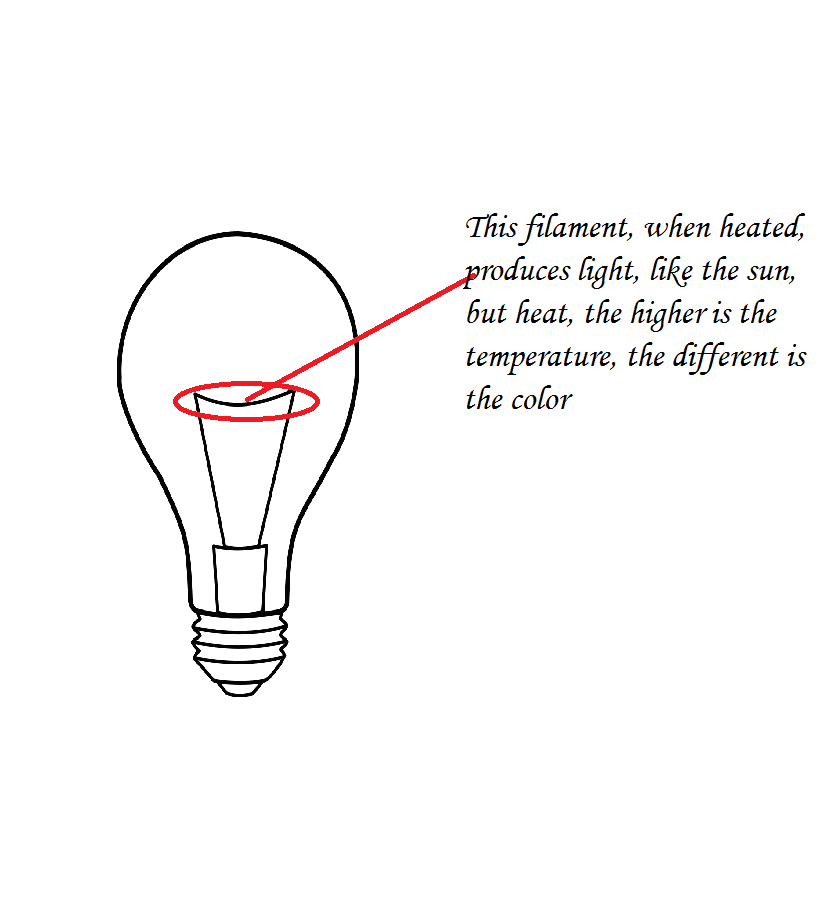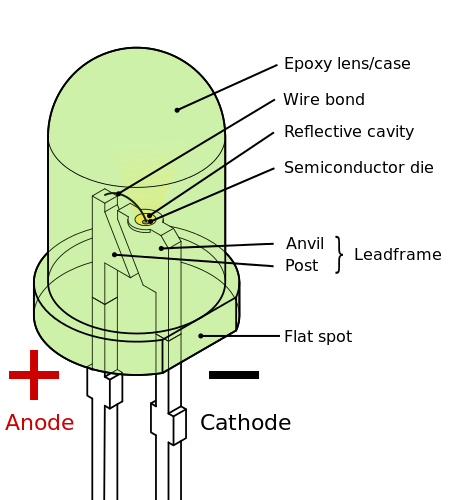How are LEDs similar to incandescent light bulbs? How are they different?
1 Answer
LEDS are similar to incandescent light bulbs because both work by "direct contact," electrical current, but they are different because LEDs work in cells and the working principle differs.
Explanation:
Light-emitting diode, or LED for short, is one of the biggest revolutions in light systems; the majority of traffic lights nowadays are based on LEDs, even TV, which before it was electron-light based, in some cases Neon.
Incandescent Light Bulbs
Incandescent light bulbs work based on a quite simple principle: an electrical current goes across a filament, protected by a special gas, otherwise it would burn out. Light will be emitted as a result of the temperature, the filament works as resistance, like in a shower device, which is a function of the voltage. See coming schematic view.

Light-emitting diode
LEDs can be seen as small Incandescent light bulbs, but with the proper element for emitting the proper light color, wavelength. The principle is slightly the same. It is called Electroluminescence .
 Image from https://en.wikipedia.org/wiki/Light-emitting_diode#/media/File:LED,_5mm,_green_(en)svg
Image from https://en.wikipedia.org/wiki/Light-emitting_diode#/media/File:LED,_5mm,_green_(en)svg
Other light-generating system
You can say that each light-generating system can be compared to a natural phenomenon, the Incandescent Light Bulbs with the sun and fire, it is infrared-based lights, and the LED as well; Incandescent Light Bulbs have the most complete electromagnetic spectra, as so that it is used when sun light is needed artificially.
The fluorescent lamps can be paralleled with storm lighting, they are generated without contact, after a voltage exceed a value, a threshold, "air resistance," the lighting appears. Some public illuminations are based on emission of light by elements, quantum mechanics, photons, that white surface you see is the light bulb, generally cylinder source, without it, your light is just "an ultraviolet bather," no light. Further, that yellowish color in some cases is the result of the element spectra.
See
https://en.wikipedia.org/wiki/Electroluminescence
https://en.wikipedia.org/wiki/Electric_current
https://en.wikipedia.org/wiki/Sodium-vapor_lamp

